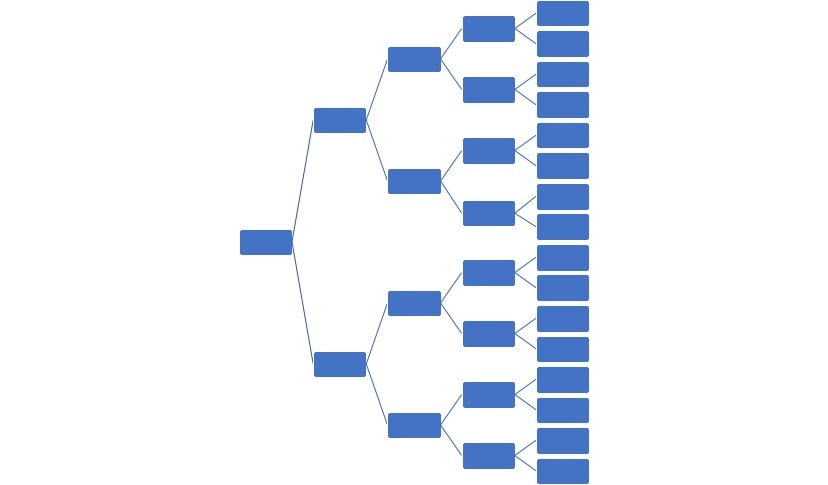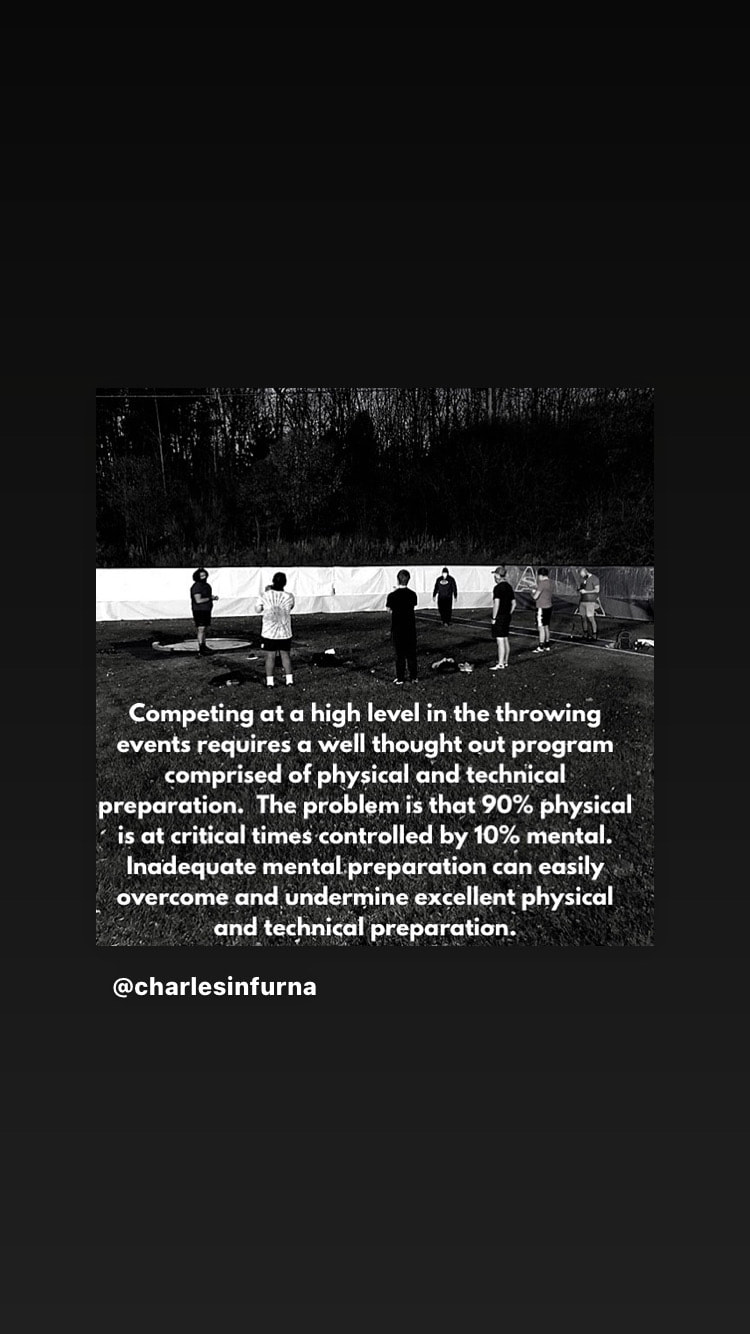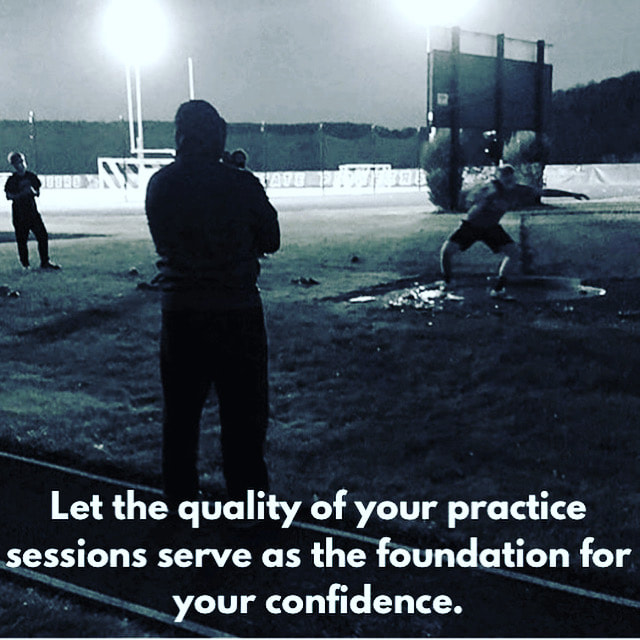|
Well, we almost made it through the fall semester. The other day we received word from Alfred State that effective immediately we were no longer to conduct practice with our athletes. Things went well on Monday and Tuesday, but some positive tests caught up from the previous weekend (Halloween shenanigans). I feel for our athletes. I feel for all athletes across the country that have had their winter seasons canceled. I think for the most part there is really nothing much they (the athletes) could have done differently. This is a campus decision based on how our numbers have seen an uptick over the course of the past couple of weeks. For the most part our athletes have been great! As I mentioned to them in an email Wednesday night, I’m very proud of them and how they have been able to navigate this unsettling time in all our lives. With positive cases and percentages creeping up across the county and state, it came as no surprise that something like this was bound to happen. I was just hoping that we could have made it to the last couple of practices. Not only for the sake of practice, but for the valuable messages shared during practice. The aside conversations in which the athletes get to better know each other. The same can be said for the athletes getting to know me better as their coach. The next few weeks will be telling. Although we are no longer able to practice on campus, once the athletes go home, some will have access to training equipment. Most of my throwers already own their own shot-puts and discii. Finding a place to throw may be difficult for some, but others have throwing facilities in their backyards. Students will tentatively be returning back to campus to commence in-person classes again on February 1st. That leaves a couple weeks of November, December, and January. Plenty of training time. Tonight we are having an all athlete team meeting via Zoom. I’m going to share some thoughts with everyone about identifying a goal they have for themselves, why that goal is important to them, and some steps they can take in order to achieve those goals. For now, a lot of the work will be independent. Tim and I really can’t have contact with the kids, but we can provide them with workouts and things they can do at home until we are able to practice again in February. I’m not sure if we will have an indoor season, but I am sure that indoor outcomes will be determined by what happens from today until February 1st. With an abbreviated season, many of the performances will be decided by the habits and actions the athletes begin to develop and establish today. Waiting for December will be too late. Beginning in January, well we would have a lot of sessions and reps to make up. Coming back in February without having touched an implement or completed some type of training session--yikes! This is a small sample of what I’m going to share with all the athletes today. I have Liz Beaubrook to thank for sharing this image on Instagram a few months ago. We all start with a goal in mind. Each subsequent step either takes us closer or moves us farther away from what we want to achieve. There are many paths and decisions to be made. But most importantly is this, with whatever direction you go, you don’t get there overnight. Let me repeat that, with whatever path you chose, you don’t get there overnight. We all make thousands of decisions each day. Most of which probably won’t determine the fate of accomplishing our short-term or long-term goals, however failing to make a determined effort to establish habits that would move us closer to our goal will have us move in the opposite direction. It doesn’t happen overnight, but it does happen over the course of 13 weeks!
0 Comments
The other day I wrote about how we structure our practice times at Alfred State to maximize the time I have with the athletes. We are limited on the number of practice sessions we can have per week (2), and guidelines restrict our practice length to one hour. Where in the past I would spend two hours training and coaching my athletes at Fredonia or Nazareth per session, now that is the maximum amount of time we have for a week. That is still more practice time than some schools across our area that have sent their students home for the remainder of the semester.
So what do we focus on? Well, much like physical skills that can be taught, such as proper technique in the throwing events, focus is a mental skill that can be taught as well. When I share ideas with my athletes about focus, we don’t sit down in a room and have what you might consider a coaches talk for an hour on the subject. I am subtle with my conversations because I am still getting to know this group of throwers and they are still getting to know me. And also because this group consists of all freshmen throwers, I don’t want to overload them with too much information during a one hour training session. I’ve briefly written about it before, but focus is a complex skill comprised of five different mental components (McGuire, 2012; 2016):
Over the past few years, I have found that concentration has been the easiest component for me to teach my throwers. I equate concentration to cuing in the circle or on the runway. When I first began coaching, I would give kids half a dozen different things to concentrate on per throw. That was not very helpful. It wasn’t helpful to the thrower and it wasn’t helping me because we would both grow frustrated when something didn’t go well. Now, I usually give my kids one or two cues after they complete their throw to think about for the next one. It is a struggle at times because if that cue goes well then something else may not go well. In my experiences, working on one or two cues a session or week assists in instilling confidence and mastery because the athletes, over time, will begin to master that specific component of their throw, so then we can move onto the next one we need to concentrate on. The most difficult component I have difficulty with is the first one, being in the present moment. I have noticed that for some athletes, it is not easy for them to turn off their academic brain and turn on their athletic brain in an instant. An athlete coming from class may have a difficult time making the initial switch. I try to give them a few minutes to gather themselves after their class before we get started. I always ask them how their day is going and how class went. That is a way to take the temperature of the group and figure out where their minds are. If they had a rough class, I know that I need to adapt my coaching style for the day to meet their needs. If they had a pretty good day, then it is probably an indication that we can continue as scheduled. All too often I’ve attended high school track and field meets and I can hear coaches screaming at their kids to focus on what they are doing. Well, if they haven’t been taught that skill, how would you (as a coach) expect them to be able to execute on it? I wouldn’t ask a thrower to take a toe and three in the hammer during a meet if they have never practiced that skill during a training session. So why would you expect high mental strength capacities from your athletes if you’ve never trained them on those specific skill sets before? I’ve recently written a couple of blog posts about expectations and coaching through a pandemic. When you look around at what is happening, a couple of things strike me as interesting. First, making the best out of a difficult situation looks different for everyone. At Alfred State, we have been fortunate enough to be able to continue practicing under guidelines issued by the college and county. We have limited time to practice, as well as limited days to practice, but we are still able to practice. Some colleges in New York have sent their students home and have transitioned to virtual learning for the remainder of the fall semester. I feel for the athletes that had nothing to do with the decision made by their college/university. I especially feel for those who were planning on having an indoor track season and winter season in general.
I think it’s important to really dig down and make the most out of each session I have with our athletes. We are able to practice for one hour, two times a week. In that time I’ve tried to keep things focused and very consistent. The athletes know what to expect when we are practicing. And even though I’ve only had a handful of sessions with them, establishing a sense of trust and mutual respect is going to go much farther than how many throws they take a week. Trust will be critical for when the athletes go home in a couple of weeks, they will be home until the end of January. They will be returning back to campus for classes beginning on February 1st. That means the athletes will be off campus for close to 10 weeks and without contact with coaches for almost 13 weeks. That is almost a whole semester unto itself! Second, creating an easy to follow routine has helped us immensely. We have been able to get quality reps in over the past couple of weeks because of a consistent and easy to follow routine and a sense of what is expected during practice. For example, last night our throwers each got over 20 quality throws in within a relatively short amount of time. In the past, when we had ample time at practice, I would have each athlete count the number of reps taken per event (shot-put, discus, hammer, weight, and javelin). Now, more than ever, being flexible and adaptive to each athlete’s needs has proven most fruitful. We only have a couple of practice opportunities left before the athletes are required to quarantine for the remainder of the semester through finals. Having established clear routines and expectations has proven quite helpful during this time. While others across the country have fewer restrictions than we do, others have already lost the indoor season. I think our athletes have adapted quite well to what lays before them. Nobody has complained. Everyone understands what they need to do in order to achieve their goals. At this point, each athlete needs to take firm control of their actions and how they will either assist or hinder them moving forward. As coaches we try our best to instill a sense of work ethic and dedication to the craft of throwing, but ultimately the next three months will prove more in regards to who has taken a step forward or step backward as we make a transition to the spring semester. A few days before our first practice Coach OG pulled me out of the weight room to talk. I didn’t know him very well, and at this point in the season I didn’t think I was in trouble, so I didn’t really think anything of it. Once in the office, he asked me how I would qualify for four events. I told him I needed to get stronger. I knew as such because my other sprinting teammates were in MUCH better physical shape than I was. My throwing teammates, well that is a whole post onto itself.
I continued with my strength levels and that I needed to watch my weight. I arrived in August, 2000 weighing about 190lbs. I don’t remember my exact weight, but I knew I was over 200lbs. by our first practice in late October. He asked me to continue with what I was sharing. By the end of the meeting, I knew exactly what I needed to do in order to accomplish my goals. I didn’t realize at the time how difficult it would be, but I knew what I needed to do. But it wasn’t just about what I needed to do, but how to do it. Before the season started, it was my goal to attend practice every day. I would be joining the sprinters on M, W, and F. I would be throwing on T, Th. I would also lift 4x a week in the fall. I also learned to love the ice bath, so I made it a point to sit in the ice bath every day after practice. I didn’t do much about my nutrition at this point because my weight started to drop after we began to really hit our stride during our training sessions on the track. We had two meets that fall semester. The first weekend in December we attended a meet at Kent State. I threw the shot-put and weight. I didn’t qualify for our conference meet in either event. I didn’t run because entries were limited. I was beyond mad at myself! The following weekend we hosted a meet at Fredonia. In that meet I hit the qualifying standard in the weight throw. We threw outside—it was probably 35 degrees and I threw just over 40’. I also qualified for the conference meet in the 55m dash. However, before I went home for the holiday break coach and I made the decision that I would focus on throwing—again, I’ll share more about this later. Coming into our indoor conference meet, I was the top ranked freshman shot-putter and weigh thrower. Back then, anyone that hit the standard qualified for the meet. I was beyond excited for the opportunity to be able to contribute to what I thought was going to be another conference championship win. Unfortunately, things did not go well that day for the Fredonia men. Actually, I believe it was the start to our program’s quick downfall to the bottom of the SUNYAC conference. For some perspective, we finished 3rd in the 2001 indoor SUNYAC championships. In our 2004 outdoor SUNYAC championships we finished last. As a team we scored 16 points. I scored 11 of them (1st hammer, 6th discus). The ride home from Hobart & William Smith College was a long one. I didn’t quite understand what had happened. For over 20 years Fredonia was untouchable. To be honest, I thought it was my fault. I thought I had something to do with it. Even if I would have won the weight, we still would have finished 3rd. My teammate Marc won the shot-put and finished 2nd in the weight throw. To be continued in Part 3 Expectations and Accountability
Early on in any new season that begins, a common conversation that takes place between a coach and their athletes is usually focused on expectations and accountability. When I was an athlete in high school, the conversation was more focused on team rules. Once I arrived at SUNY Fredonia, the conversation quickly turned to expectations. I vividly remember our first team meeting with Coach O’Gorman. It was in early September, 2000, and took place in the student-athlete lounge in Dods Hall. There weren’t that many of us, maybe 40-50 athletes who were going to embark on that 2000-01 season. As a team, Fredonia was coming off of indoor and outdoor conference championships. The double decade of dominance streak was broken in 1997, but another streak quickly began in 1998. I wasn’t made aware of the streak until this first team meeting. I sat with another freshman thrower, Erik Dalecki. We sat in the back of the room. We were the only freshman throwers, and quickly became friends once we realized we would both be throwing on the team. Coach O’Gorman, or Coach OG as I called him, began the meeting with a recap of the previous season, who graduated, new freshmen, new transfers, completing NCAA paperwork, and what to expect during the upcoming season. One of the primary reasons I picked Fredonia was because of the rich track and field history the team had. Reflecting back now, it shouldn’t have been the top reason I selected Fredonia, but what can you do now. Coach laid out his expectations for us—that we attend practice every day, make sure we go to class, ensure our grades are high enough to be academically eligible, to make an appointment with the trainer (if necessary), to get our weightlifting sessions in, and to take care of our teammates. To be honest, it wasn’t really what I was expecting (no pun intended). In high school we were told not to do certain things. Here, the message was about doing things that will give us the best opportunity to be successful. Coach did not mess around with grades—I should know, I almost failed one of his classes, and when I asked him about it he said, “Charlie, sometimes you gotta bite the bullet”. That wasn’t the response I was expecting, but certainly ties into accountability. Before the first practice of the season I met with Coach OG. He wanted to discuss my seasonal goals and how I would achieve them. Again, this was my first real introduction to accountability. I told Coach that I wanted to compete in the 55m, 200m, weight throw, and shot-put at the SUNYAC conference championships. I told him I was going to be the first thrower to qualify and compete in those events from Fredonia. He asked me how I was going to do that. I told him I would hit the qualifying marks before the conference meet. That was not the response he was looking for. He asked me again, how I would qualify for those four events. This meeting took place in October, 2000. Our conference meet was in February, 2001. Again, I said I would hit the qualifying marks before the conference meet. At this point I was frustrated. I knew he was too because he asked me to leave his office. Mind you, this wouldn’t be the last time in our three years together. To be continued in part 2 Coaching Through a Pandemic
If you have been following along on my coaching podcast the past couple of weeks, you have probably guessed that trying to coach through a pandemic is quite difficult. The kids have been great. The administration has been great. Everything has worked out pretty well for the time we have had to practice. Besides a couple of rainy days, we have had some decent fall throwing weather. Granted, I haven’t coached indoor events outside since my time at Fredonia. Yet, it doesn’t look like we are going to have an indoor season anyway. A couple of weeks ago the SUNYAC conference made the decision to cancel their winter sports seasons. Yes, halfway through October, they cancelled all their winter campaigns. At Alfred State, we are not affiliated with a conference for indoor competition, so it might not cause that much of a disruption to our season. I can’t help but wonder which conference will be next. At the Division III level, I wouldn’t be the least bit surprised if our indoor and outdoor seasons are cancelled. The NCAA has already awarded student-athletes a waiver to compete for the previously missed outdoor season. With the loss of another season on the horizon, athletes may be granted a fall (XC), winter (indoor track), and spring (outdoor track) waiver for future competition. A whole year’s worth of competition, as long as you are registered for at least 12 credit hours per semester, or are finishing a degree program in which you can take fewer than 12 credits (if you only need 3 or 6 for example). Having conversations with your athletes about their future may be a difficult one to have. At Alfred State, I have six freshmen and one sophomore. If our seasons are cancelled, everyone would be eligible to come back for a fifth or sixth year without penalty to compete. But at the Division III level, unless you REALLY love the sport, it may be difficult for athletes to make the decision to come back. We (Division III) are non-scholarship athletes. I would find it difficult to encourage an athlete to come back for that last season just for the sake of competing. Sure, if they would like to work on a minor or double major, then I’d be all for it. But coming back just to compete for one more season, well I couldn’t make them, but I also probably wouldn’t say no. If they would want to come back and compete then I’d be all about it. Keeping them engaged, that may be the difficult part. I discussed it briefly in my most recent podcast episode when I answered a question about motivation. They question was about keeping your athletes engaged in practice with the looming doubt that there would be an indoor and outdoor season this year. I’ve actually discussed this topic with my kids since I recorded the podcast. I think it really comes down to figuring out their why. I’m not trying to get philosophical here, but training for the sake of training without the notion of competition for a full calendar year may be tough for some athletes. As an adult I’ve struggled with engagement and focus with the idea of competing three months away, let alone a year or longer. I explained the current situation to my kids—we discussed the unknown, controlling what we can control, and really thinking about why competing and being a member of the team is important to you. Some of you might think that these conversations I speak of occur in a classroom type setting, but 99% of the time they happen when the kids are taking a break from throwing. And in this more recent case, it occurred in damp and rainy conditions before practice ended. Now I don’t know the athletes really well yet, and they don’t know me well either, but I believe these conversations help reveal what athletes value. I explained that if our indoor season is cancelled, we’ll hopefully be better prepared for the outdoor season. It’ll save their bodies from throwing the weight (LOL), and it will give us more reps to take in the discus, hammer, and javelin. I see the position in the situation. My college age self would not have been as receptive, however I think I have more forward thinking now than I did 20 years ago. Hopefully those experiences (longer-term planning) can positively lend themselves to better outcomes for my current group of athletes. The nice thing about being focused on the process over the outcome is that if we had planned out a perfect indoor season peak, it can and will probably be wiped out, outside of our control. Focusing on getting quality reps in, learning the technique, and taking our time in training should lend itself to a higher-quality outdoor season. It should, but then again as I already suggested, we may lose the outdoor season too. |
Dr. Charles InfurnaCharles Infurna, Ed.D., is the owner and lead coach of Forza Athletics Track Club. Dr. Infurna has coached National Record Holders, National Champions, All-Americans, and Conference Champions at the Post-Collegiate, Collegiate, and High School level. Archives
January 2023
Categories |




 RSS Feed
RSS Feed